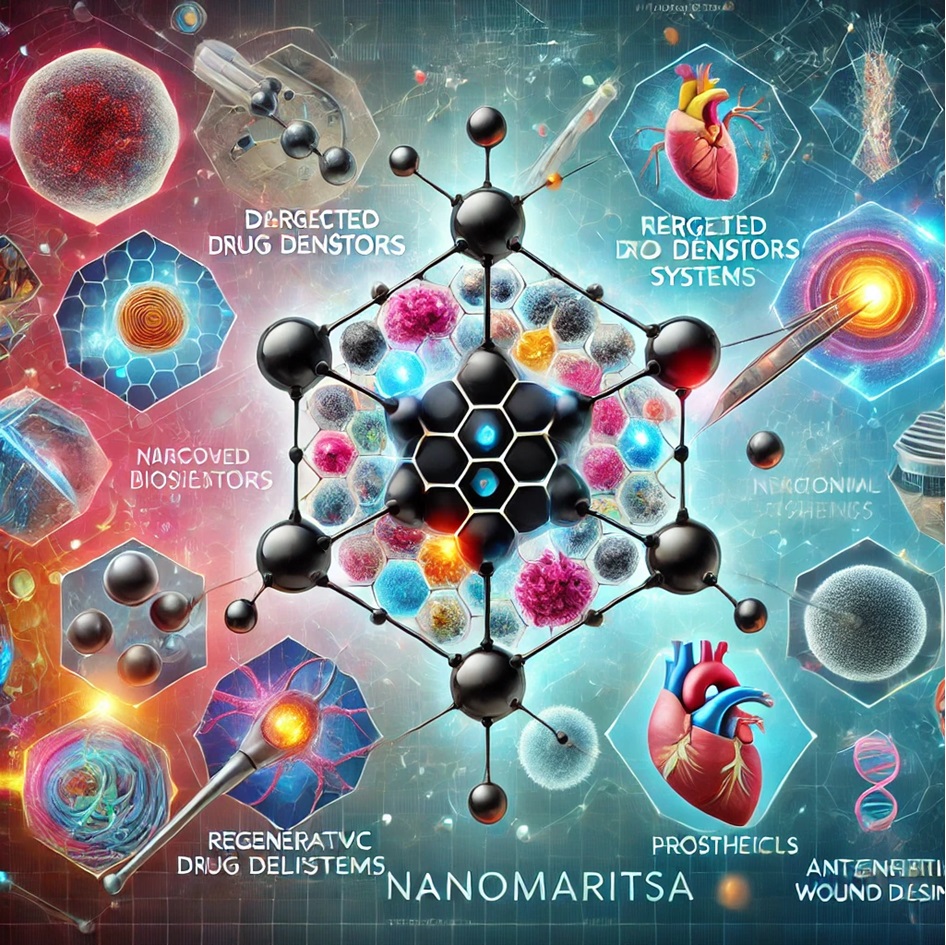Revolutionizing Healthcare Applications of Graphene in Medicine
Revolutionizing Healthcare: Applications of Graphene in Medicine
Graphene, a single layer of carbon atoms arranged in a hexagonal lattice, is redefining possibilities in the field of medicine. With its exceptional properties—such as high mechanical strength, electrical conductivity, biocompatibility, and large surface area—graphene is unlocking new frontiers in diagnostics, drug delivery, tissue engineering, and more. This article explores the transformative applications of graphene in medicine, drawing on recent research and innovations.
Why Graphene is Ideal for Medical Applications
Graphene’s unique properties make it an extraordinary material for healthcare:
- Biocompatibility: Graphene-based materials are well-tolerated by biological systems.
- High Electrical Conductivity: Enables advanced bioelectronics and neural interfaces.
- Large Surface Area: Facilitates efficient drug loading and interaction with biological molecules.
- Mechanical Strength: Supports durable and flexible medical devices.
- Antimicrobial Properties: Inhibits bacterial growth, making it valuable for wound care.
Applications of Graphene in Medicine
- Drug Delivery Systems
Graphene-based nanocarriers are revolutionizing drug delivery by enabling controlled and targeted release:
- Targeted Therapy: Functionalized graphene oxide (GO) delivers drugs to specific cells, minimizing side effects.
- Controlled Release: Research published in Advanced Drug Delivery Reviews highlights how graphene’s surface can be modified for time-specific drug release.
- Cancer Treatment: Graphene nanoparticles are used to deliver chemotherapeutic agents directly to tumors, enhancing treatment efficacy.
- Biosensors and Diagnostics
Graphene’s sensitivity and conductivity are driving breakthroughs in diagnostics:
- Disease Detection: Graphene-based biosensors detect biomolecules at ultra-low concentrations, enabling early diagnosis of diseases such as cancer and diabetes.
- Wearable Sensors: Flexible graphene sensors monitor vital signs like heart rate and glucose levels in real-time.
- DNA Sequencing: Graphene nanopores facilitate rapid and cost-effective sequencing of genetic material.
- Tissue Engineering and Regenerative Medicine
Graphene’s mechanical strength and biocompatibility make it an excellent scaffold for tissue engineering:
- Bone Regeneration: Graphene-reinforced composites support bone growth and healing.
- Neural Interfaces: Conductive graphene scaffolds enhance nerve regeneration and integration with neural prosthetics.
- Skin Grafts: Graphene-based materials promote wound healing and tissue repair.
- Antimicrobial Applications
Graphene exhibits strong antimicrobial properties, making it useful in preventing infections:
- Wound Dressings: Graphene oxide coatings prevent bacterial infections in wounds.
- Medical Implants: Graphene’s antimicrobial surfaces reduce infection risks in implants and prosthetics.
- Advanced Medical Devices
Graphene is enabling the next generation of medical devices:
- Flexible Bioelectronics: Graphene-based electrodes are used in brain-machine interfaces and wearable health monitors.
- Energy Storage: Graphene supercapacitors power implantable medical devices like pacemakers.
- Imaging Technologies: Graphene’s optical properties improve the resolution and sensitivity of imaging systems.
Recent Research and Innovations
- Graphene Quantum Dots (GQDs): Research in Nature Nanotechnology demonstrates that GQDs enhance fluorescence imaging, aiding in cancer detection.
- Photothermal Therapy: Graphene’s ability to absorb and convert light into heat is being used to kill cancer cells selectively.
- Hybrid Materials: Combining graphene with polymers and biomolecules has led to innovations in drug delivery and tissue scaffolding.
Advantages of Using Graphene in Medicine
- Precision: Enables highly specific targeting in drug delivery and diagnostics.
- Efficiency: Reduces treatment times and enhances diagnostic accuracy.
- Versatility: Suitable for a wide range of medical applications.
- Sustainability: Graphene’s production is becoming more eco-friendly and scalable.
Challenges and Limitations
While graphene holds immense promise, there are hurdles to overcome:
- Toxicity Concerns: Understanding the long-term effects of graphene in biological systems is crucial.
- Scalability: Producing medical-grade graphene at scale remains challenging.
- Regulatory Approvals: Extensive testing and validation are required for clinical applications.
Future Prospects
Graphene’s role in medicine is expected to expand as research advances and manufacturing techniques improve. Key areas of future development include:
- Personalized Medicine: Graphene-based sensors and devices tailored to individual patient needs.
- Neural Prosthetics: High-resolution graphene interfaces for brain-machine communication.
- Smart Implants: Graphene-enabled implants that monitor and respond to physiological changes.
Conclusion
Graphene is revolutionizing medicine by offering innovative solutions to long-standing challenges in healthcare. From early disease detection to advanced regenerative therapies, graphene’s potential is vast and transformative. As research continues to unlock new possibilities, graphene’s integration into medicine promises a future of unprecedented medical advancements, improving health outcomes for millions around the world.


